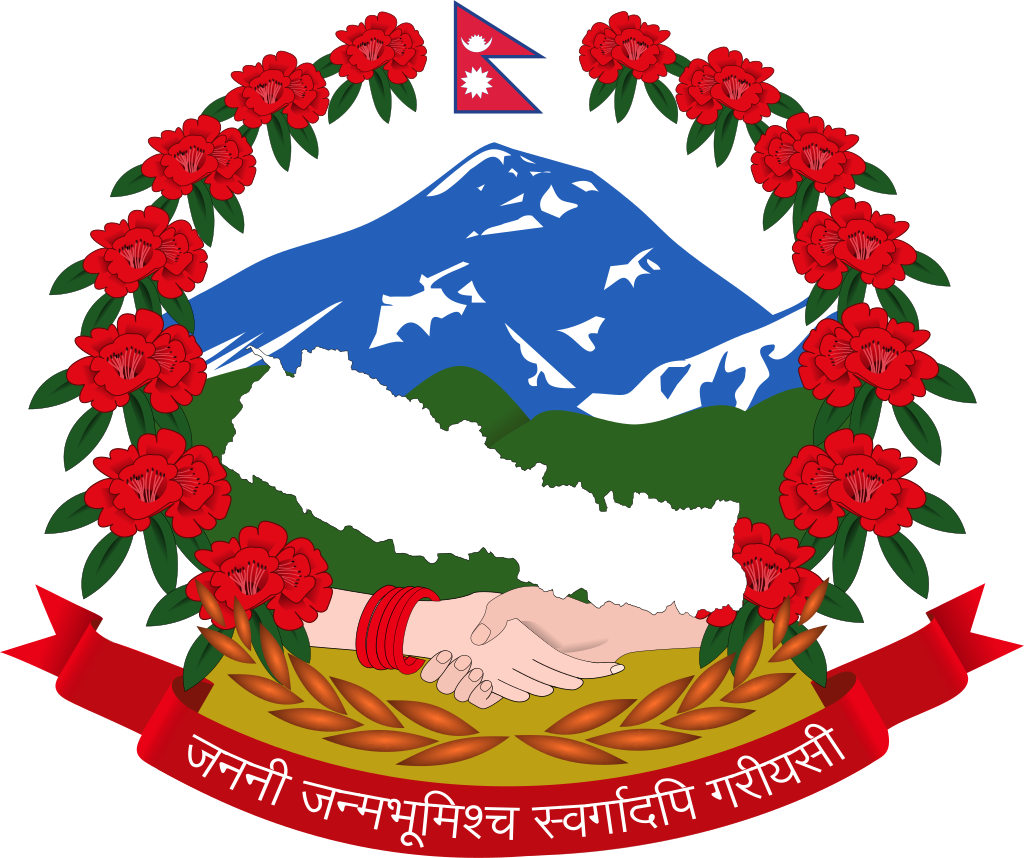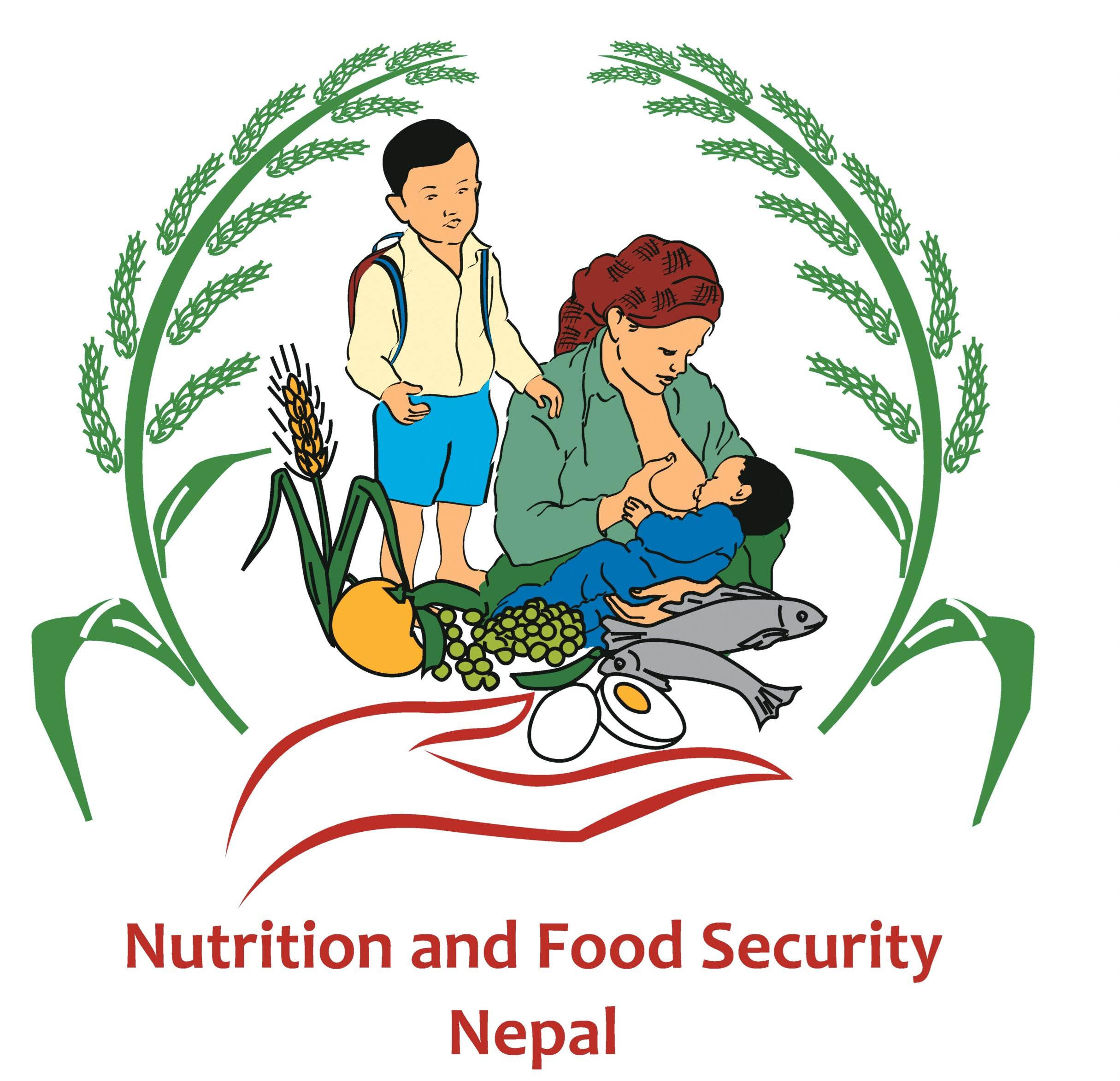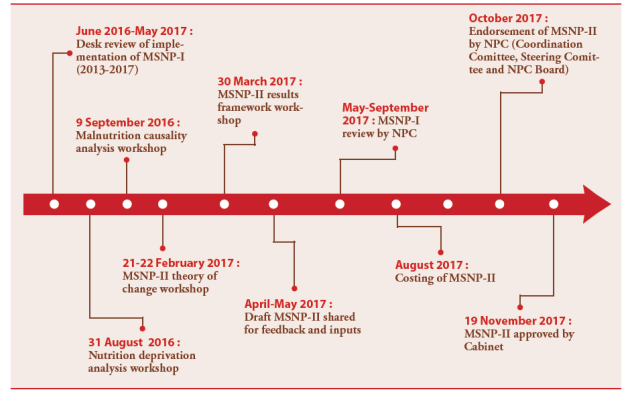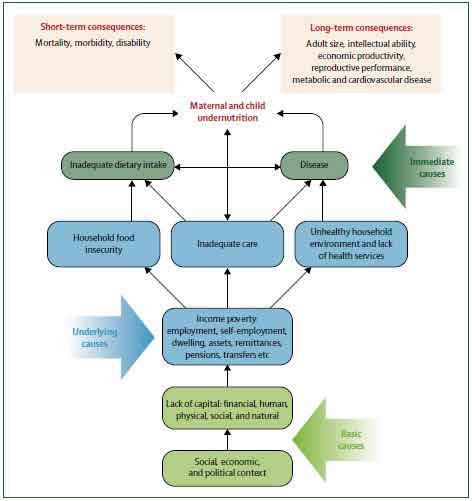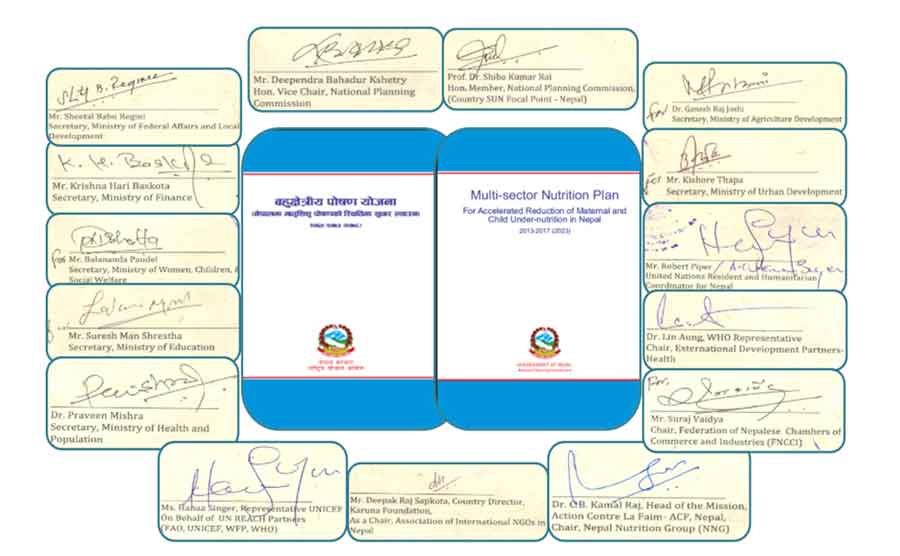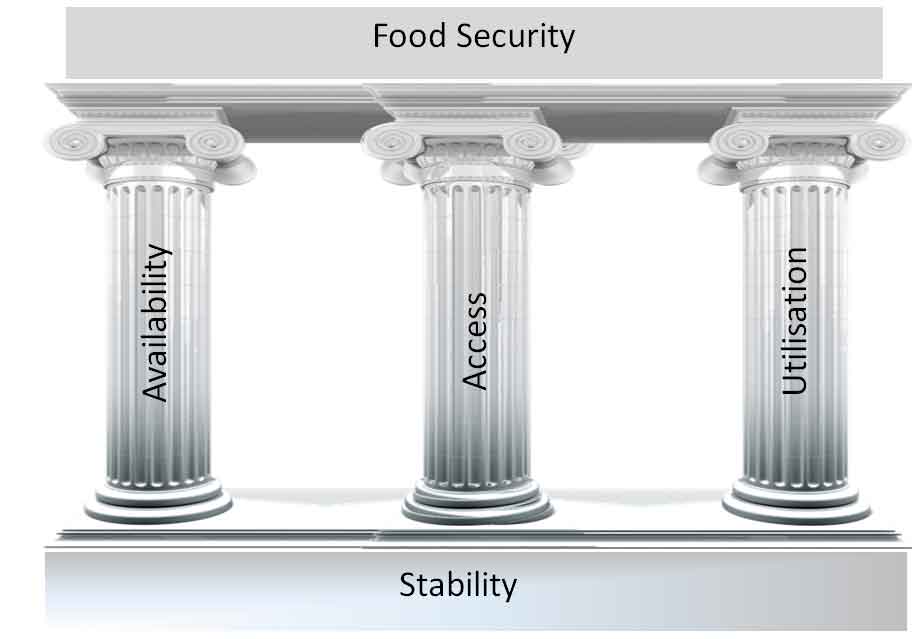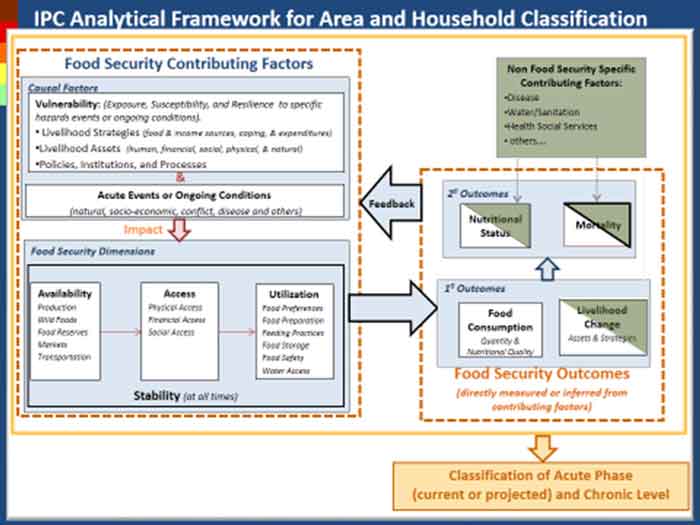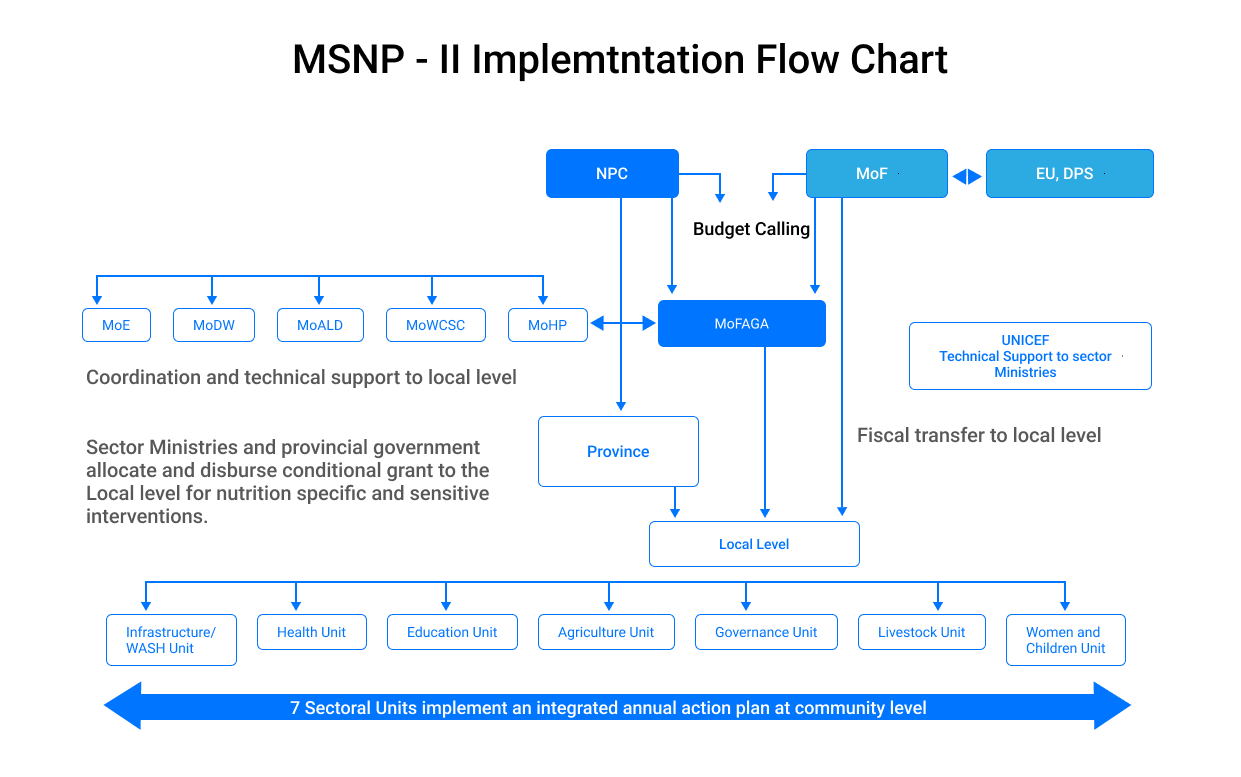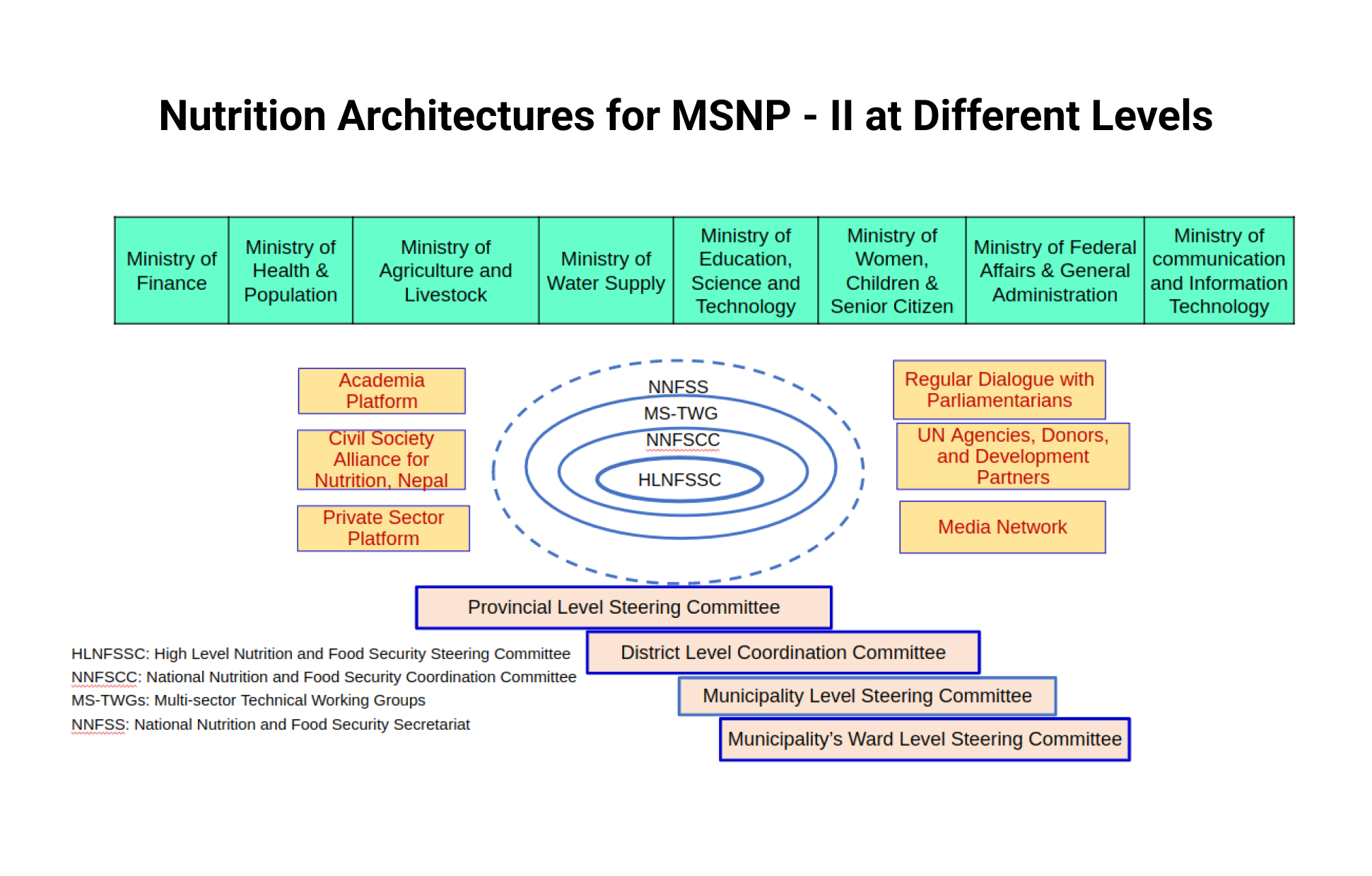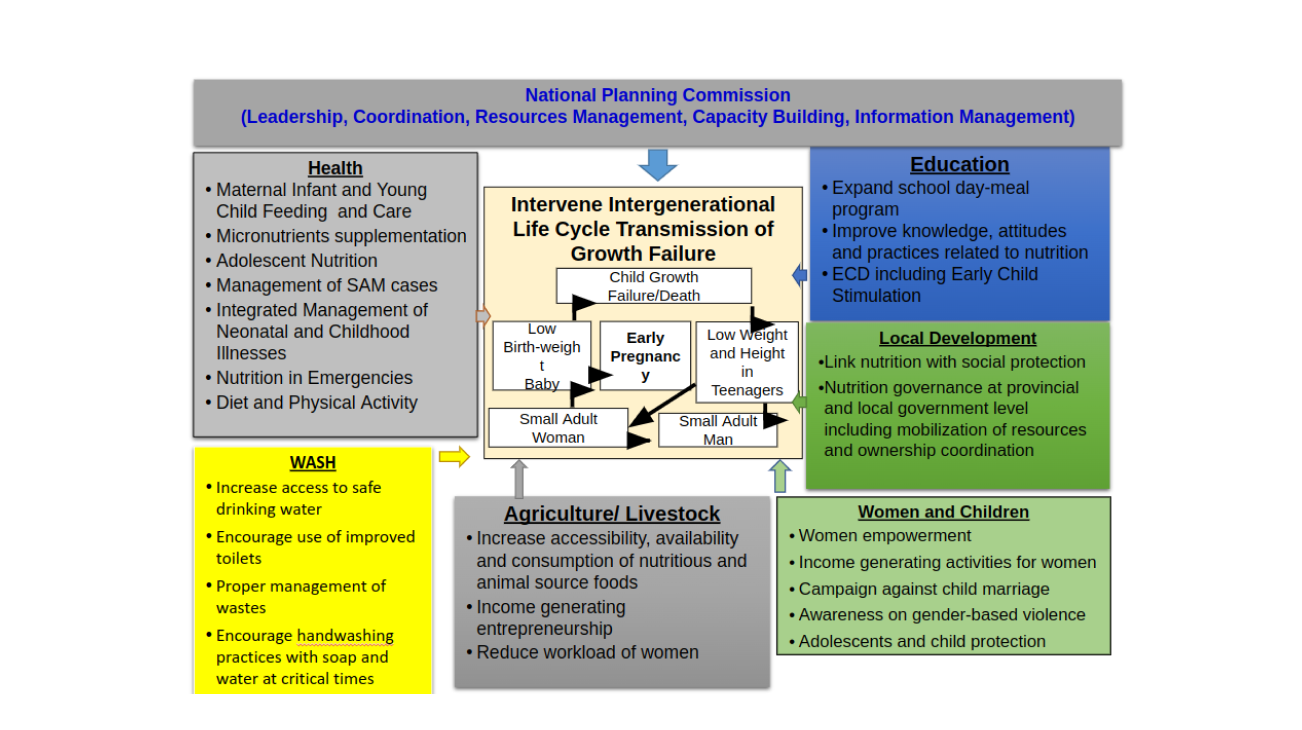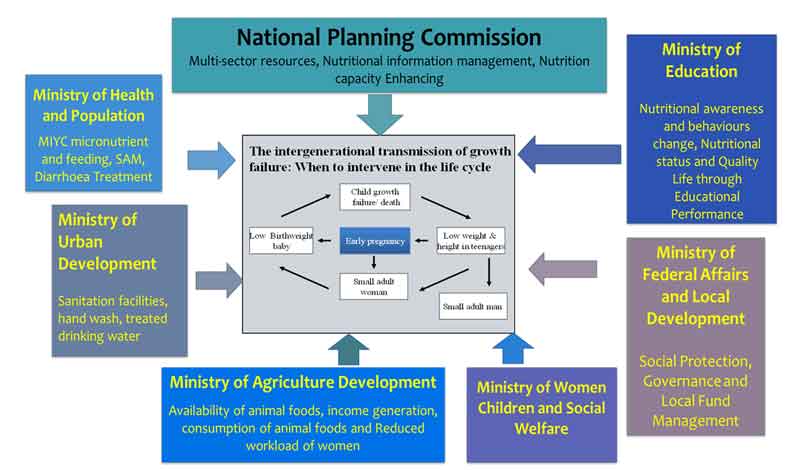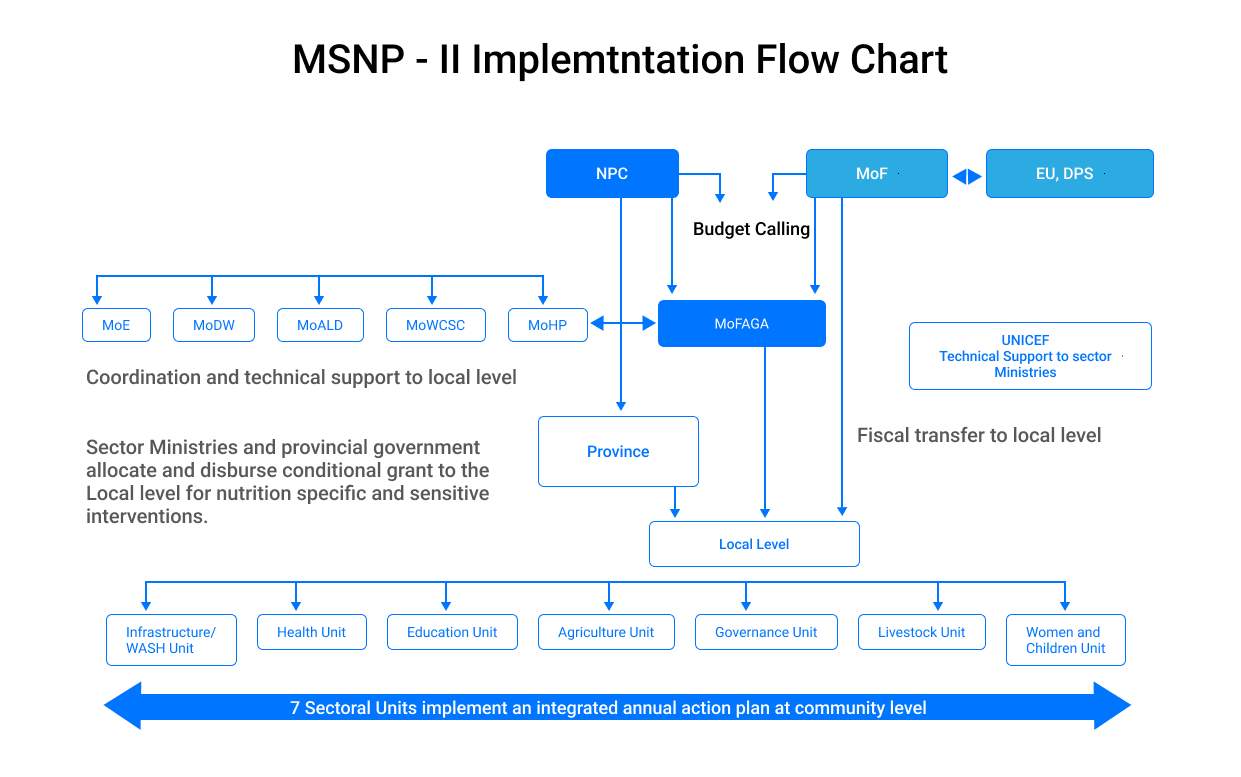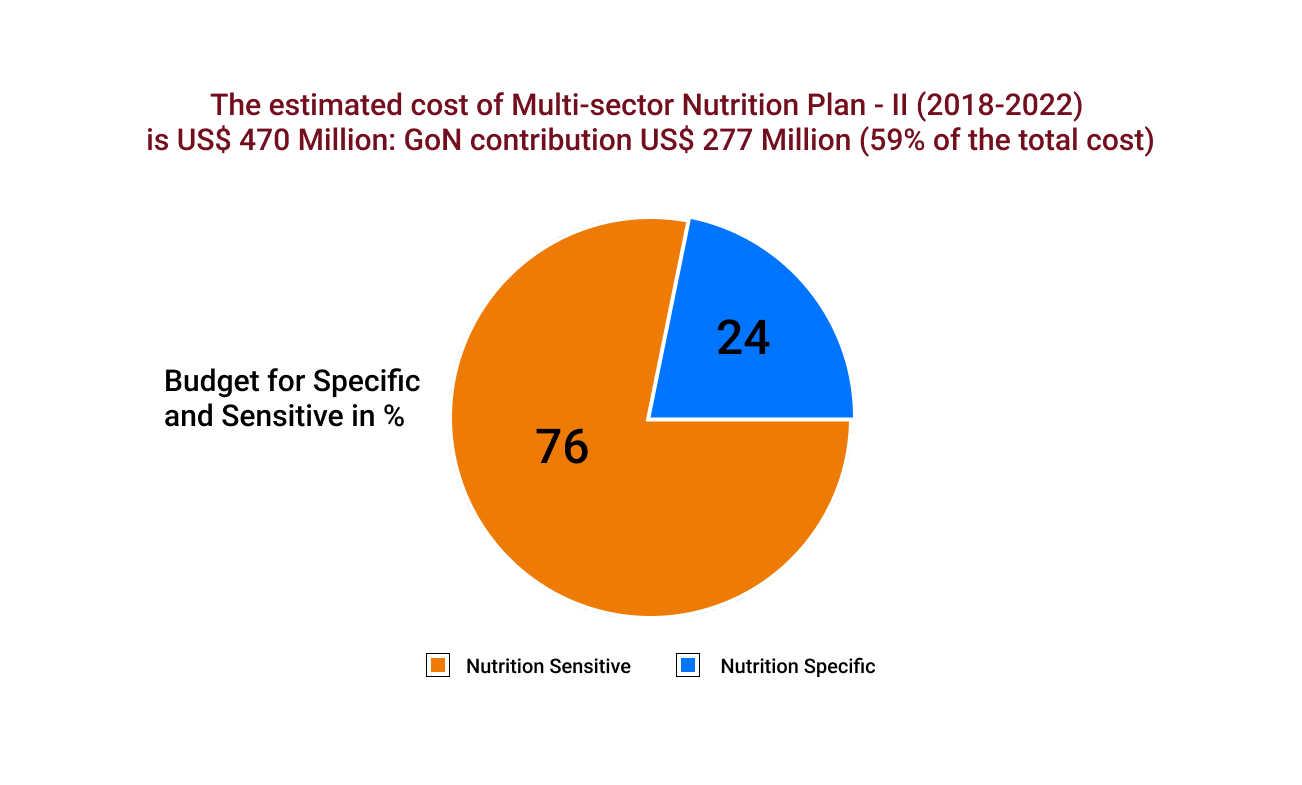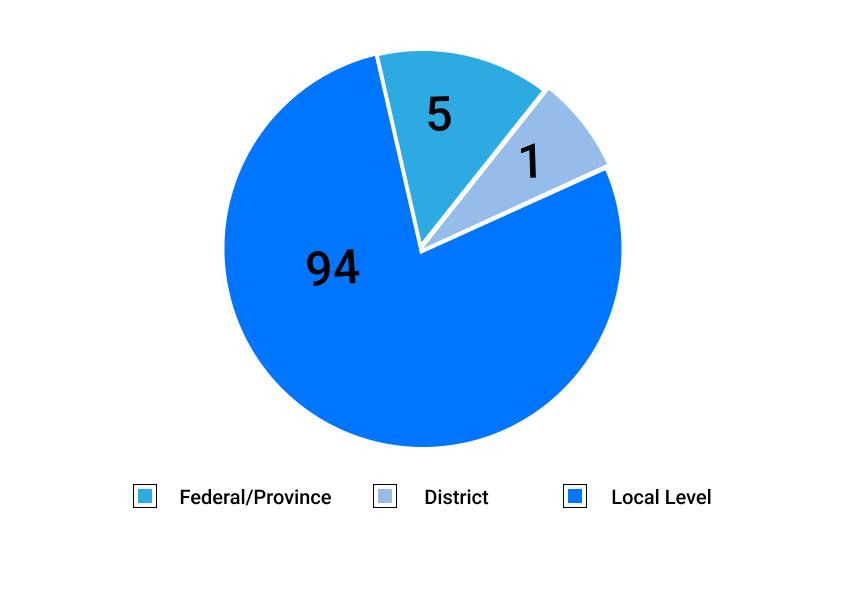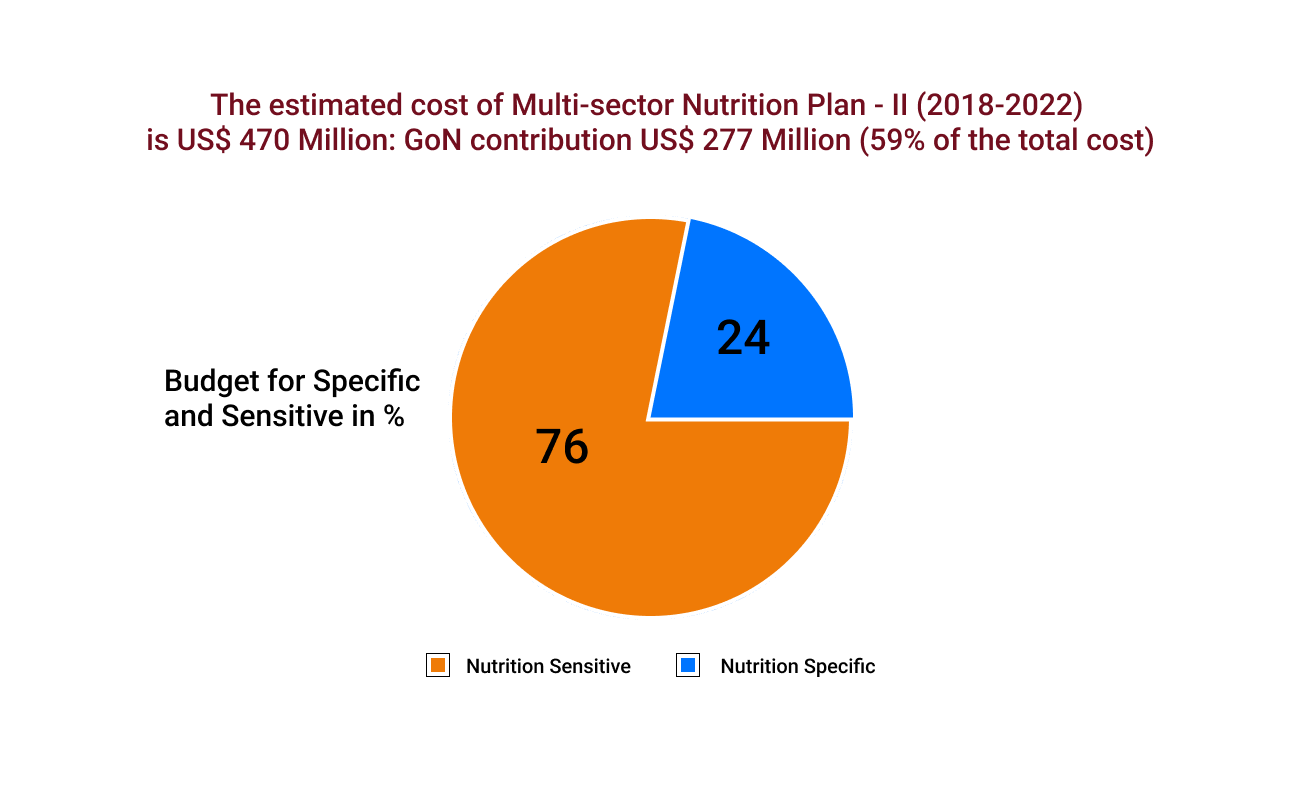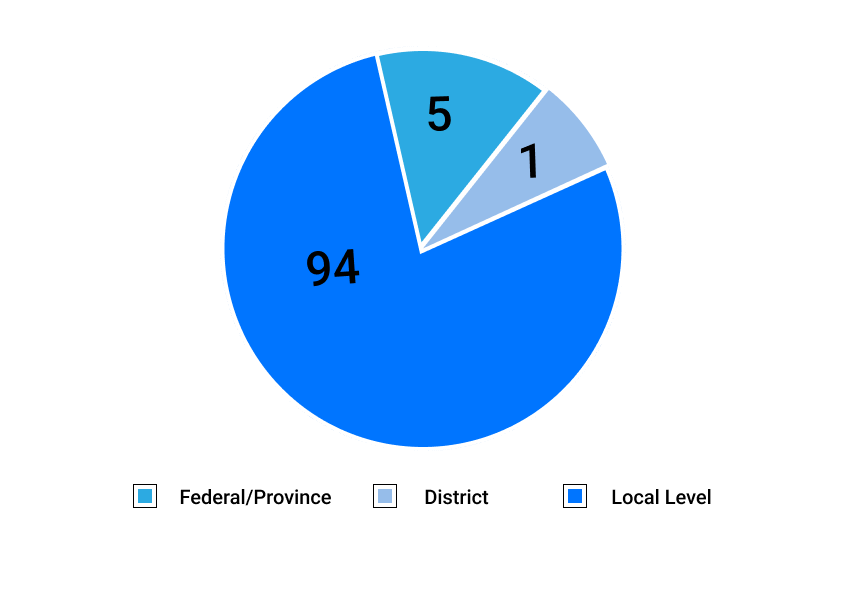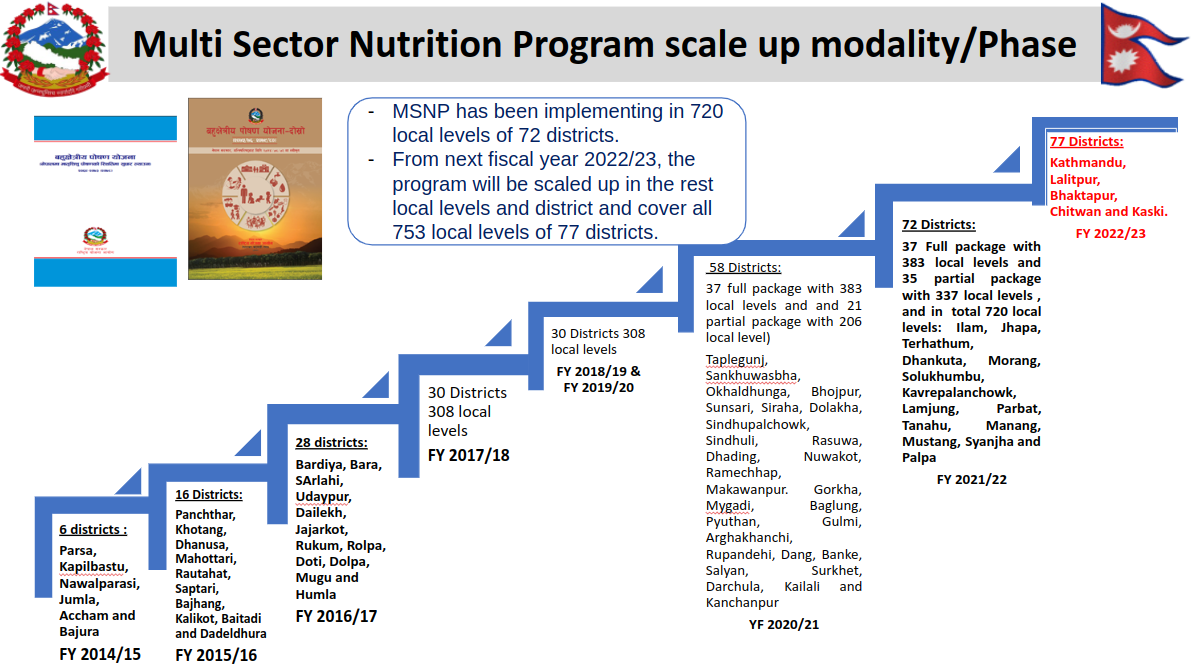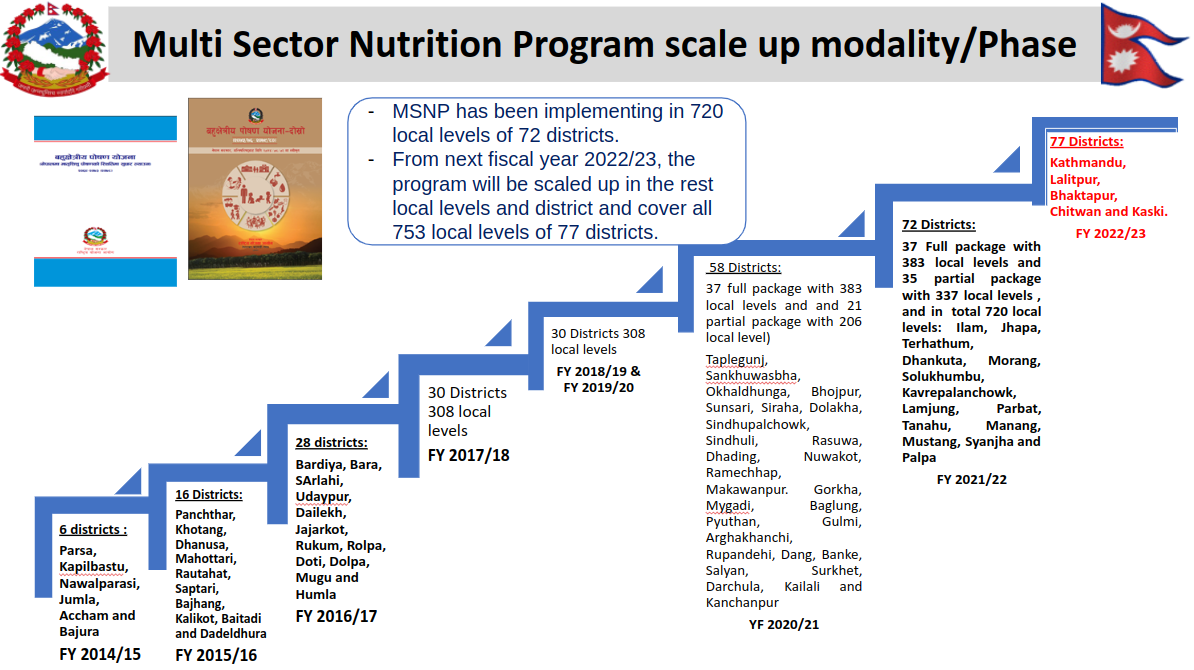To meet the World Health Assembly 2025 target and the SDG 2030 target for nutrition and combat all forms of malnutrition among women, children, and adolescents, Nepal adopted a multi-sectoral approach and formulated Multi-sectoral Nutrition Plan (MSNP). The MSNP in Nepal is the culmination of thirty years of policy development in improving nutritional outcomes for mothers and children.
Since 2006, by observing the result of the Nepal Demographic Health Survey 2006, the national stakeholders felt that only the health sector interventions are not sufficient to address the nutrition issues in Nepal and the nutrition-sensitive interventions should go together with specific interventions with strong national nutrition governance mechanism. Meanwhile, Nutrition Assessment and Gap Analysis (NAGA) was done in 2009-2010 and the NAGA report recommended that the nutrition is multiple determinants and to address the nutrition issues, multisector nutrition interventions are necessary. With this idea, NPC was identified as the national coordinating body for nutrition-specific and sensitive interventions at all levels by bringing five key sectors namely the Ministry of Health and Population, Ministry of Education, Science and Technology, Ministry of Agriculture and Livestock, Ministry of Urban Development and Ministry of Local Development and development partners together. Moreover, sectoral evidence was reviewed of the key five aforementioned sectoral ministries. Based on the outcomes of sectoral reviews, and global and national evidence National Planning Commission developed the national Multi-sector Nutrition Plan (MSNP) with 10 years vision (2013-2022) and five years plan (2013-2017) together with key five sectoral Ministries, departments, donors, UN agencies, external development partners, academia and private sector. Later, during the implementation of MSNP from 2013-to 2017, the Ministry of Women, Children, and Social Welfare was the sixth ministry added for MSNP implementation in Nepal.
The MSNP-I (2013-2017) was endorsed by the Council of Ministers and launched by Dr. Baburam Bhattarai the then Rt. Honorable Prime Minister of Nepal on September 20, 2012. With the endorsement of the Cabinet, the implementation of the MSNP-I was launched in six districts in 2014, to add ten districts in 2015, and an additional 12 districts in 2016. By the end of MSNP-I (201-2017), the program was implemented in 308 local levels of 30 districts.
After the completion of MSNP-I (2013-2017) and as a continuation of MSNP-I, the Government developed MSNP-II (2018-2022) to scale up interventions of nutrition-specific and nutrition-sensitive interventions as well as create an enabling environment. MSNP- II was formulated with slight modifications reflecting the lessons learned from the first phase and adapted to the three-tier government system following federalization in 2015. The MSNP-II was launched by Honourable Deepak Bohara, Minister of Health and Population of Nepal on December 14, 2017. Alike MSNP-I (2013-2017), MSNP-II (2018-2022) was formed by GoN under the leadership of NPC in coordination with six different sectors (Health, Education, WASH, Women, Children, and Senior Citizens, Agriculture, and Livestock, Local Governance). The Government of Nepal and the European Union (EU) signed an agreement to support the MSNP-II with a total budget of €23.35 million. Out of the total financial support, €20 million is the direct budget support through the government treasury system and €3 million to the UNICEF for the complementary support where UNICEF will add €1 million on top-up for the technical support.
The MSNP seeks to facilitate systemic change to ensure that the policy and funding mandate at all levels of Nepal’s government (federal, provincial, and local) supports the improved nutritional status of children under five years of age, adolescents, and women in vulnerable social conditions. The MSNP- II has six outputs and 33 activities under nutrition-specific interventions that are managed by the Ministry of Health and Population. There are 13 outputs and 59 key activities under nutrition-sensitive interventions that are implemented by sectoral ministries with the facilitation and coordination of the Ministry of Federal Affairs and General Administration.
Since the beginning of the MSNP in 2013, the Government of Nepal has collaborated with development partners to scale up multi-sectoral “nutrition-specific” and “nutrition-sensitive” interventions, while simultaneously implementing interventions to improve the ‘enabling environment’. Currently, MSNP-II nutrition-specific and nutrition-sensitive interventions are being implemented under the aegis of the National Planning Commission, with technical and financial support from a range of development partners predominately from the EU and UNICEF Nepal. To date, MSNP has been scaled up and is being implemented in 720 out of 753 local levels of 72 districts out of 77 districts and the plan is to cover all 753 Local Levels by the end of the current fiscal year 2078/079 (2021/022).
